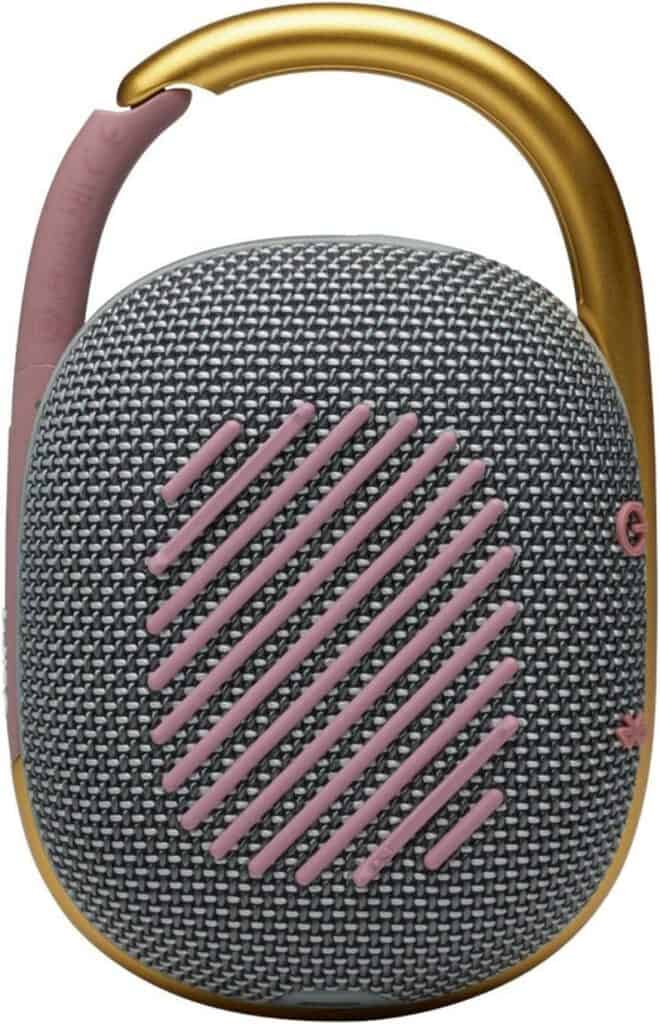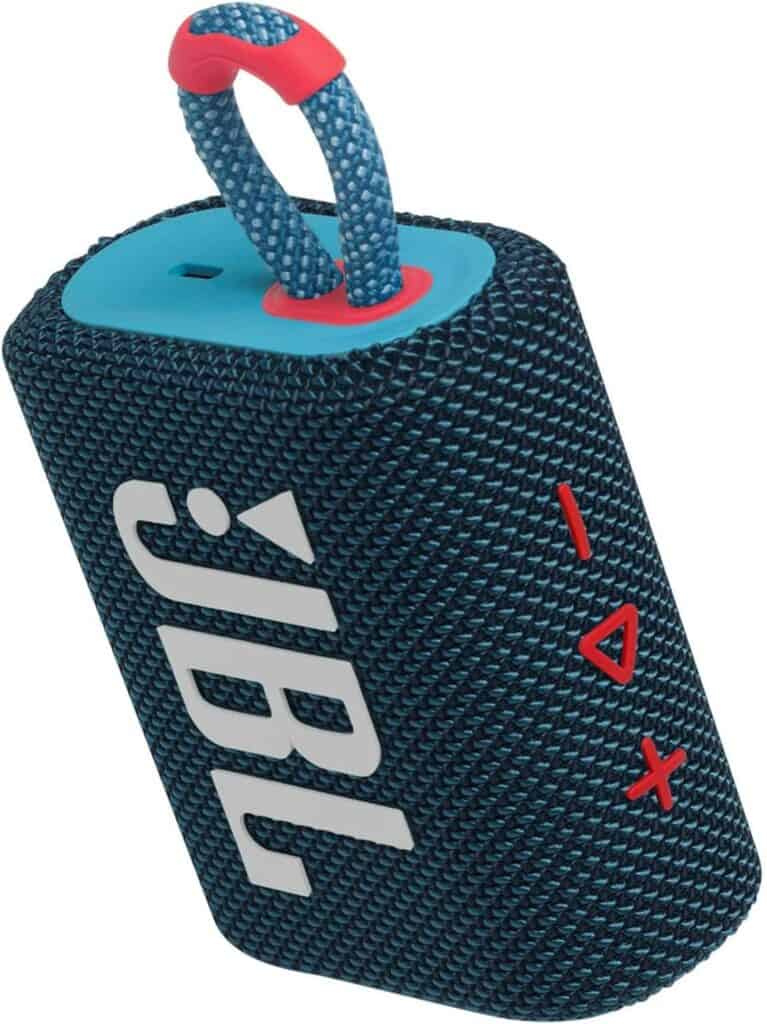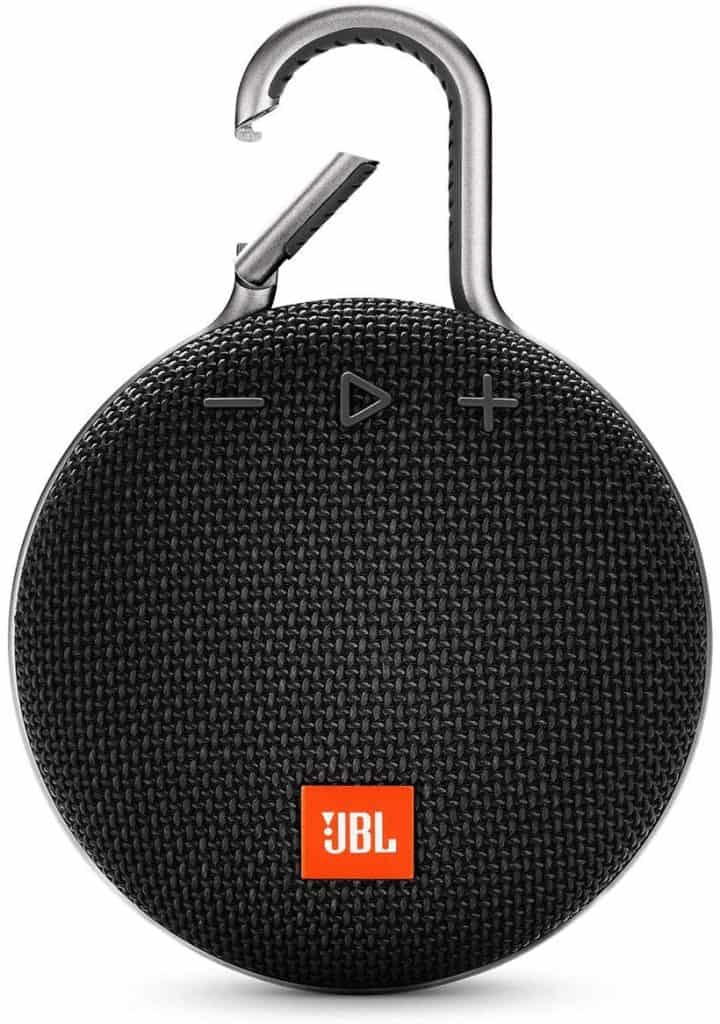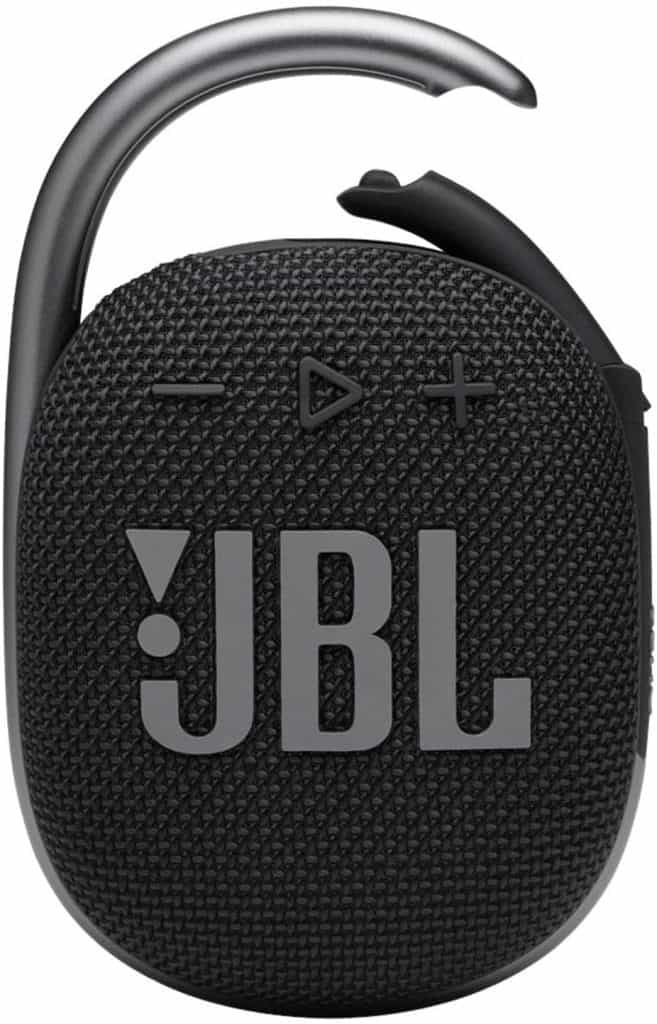With its rugged design and low price tag, JBL Clip speakers have become a popular choice for those searching for a small, budget-friendly portable speaker. The most recent version is Clip 4, which keeps the greatest features of Clip 3 while also adding some new ones. To what extent did things improve? Get to know in this JBL Clip 3 vs Clip 4 speaker comparison.
JBL Clip 3 and Clip 4 pros and cons
Before we jump into the full-fledged comparison of the two speakers by JBL, let’s take a look at their pros and cons.
JBL Clip 3
Here are the pros and cons of JBL 3:
Pros
- Powerful battery
- Built-in microphone
- Strong Bluetooth connection
- IPX7 rating for water resistance
Cons
- Weak bass
- Dated microUSB charging
- Lacks high-end streaming codes
JBL Clip 4
Here are the pros and cons of JBL 4:
Pros
- Better connectivity with Bluetooth 5.1
- IP67 rating
- USB-C charging support
- Improved battery life
Cons
- Misses out on fast charging
- Lacks AUX and microphone support
Side by side comparison table
Let’s get started with a simple comparison table between the JBL Clip 3 vs Clip 4 to give you a general idea of the differences.
| Model | JBL Clip 3 | JBL Clip 4 |
|---|---|---|
| Dimensions | 137mm x 97mm x 46mm | 134mm x 86mm x 46mm |
| Weight | 220 grams | 239 grams |
| IP Rating | IPX7 | IP67 |
| Frequency Range | 120 Hz to 20 kHz | 100 Hz to 20 kHz |
| Power | 3.3 watts | 5 watts |
| Connectivity | 3.5mm analog, Bluetooth 4.2 | Bluetooth 5.1 |
| Charging port | Micro USB | USB-C |
| Microphone | Yes | No |
| Battery Life | Up to 10 hours | Up to 10 hours |
| Charging Time | 3 hours | 3 hours |
| Accessories | Micro USB cable | USB-C cable |
| Pricing | Check Price on Amazon | Check Price on Amazon |
Features face to face comparison
Let’s dive into the face-to-face comparison of JBL Clip 3 vs Clip 4 as we explain every feature.
Sound Quality
Sound quality on both speakers is exceptional considering their size and cost. It’s no contest, though, for the Clip 4.

Due to its lower frequency range of 100 Hz as opposed to the Clip 3’s 120 Hz, the Clip 4 is able to generate more sub-bass sounds. Additionally, the Clip 4’s low-end tuning is more focused, and the treble is dialed down a touch to minimize an excessive hissing sound.
For a speaker this compact, the JBL Go 3 doesn’t have much low-frequency output. Vocals and primary instruments sound crystal-clear. If you listen to a lot of treble-heavy music, you’ll be disappointed with the sound quality.
There is a lot of similarity in how the two JBL Clips sound. Low frequencies are tighter, and mids come through louder. Even though they are similar, the Clip 4 has a superior sound quality. It is great indoors and outdoors with small gatherings.
Design and Build
In terms of general construction and operation, there aren’t many differences between the JBL Clip 3 vs Clip 4.
The fronts of each of them are covered in a woven cloth. The Clip 3’s stitching makes it more sensitive to sounding distorted when submerged in water, but it still functions well, and the sound returns to its full clarity as the water has evaporated.

Design-wise, the Clip 3 has a plastic padding on the back, however, the Clip 4 has patterned padding that keeps it in place more securely. While other speakers of this size can be a bit unsteady even while playing moderate bass, neither of these models disappoint as they can handle bass without shaking.
A carabiner on the top allows the gadgets to be attached to a backpack loop or other strap. They have a plastic-metal feel to them, although we are not sure what sort of metal is used. The remainder of the body is constructed of plastic.
On both devices, the buttons are really haptic and clicky. Aside from the price, both speakers are pretty robust and well constructed.

Water resistance is an added benefit to the sturdy construction of these speakers. The JBL Clip 3 has IPX7 rating while the JBL Clip 4 has IP67 rating, making them waterproof and dustproof, although it does not have a waterproof seal. It is possible to submerge them for up to three minutes in water without damaging them.
Battery and Connectivity
The JBL Clip 4 has Bluetooth 5.1 support, whereas the JBL Clip 3 has Bluetooth 4.2, as they are more recent versions. The JBL Clip 4 offers a greater operational range than the JBL Clip 3, thanks to the recent Bluetooth version. However, both connections are reliable, and dropouts are minimal.
The JBL Clip 3 features a 3.5mm port for wired connection in addition to Bluetooth connectivity, which is a distinct benefit over the Clip 4, which lacks a 3.5mm port. Both the speakers can easily connect with any device with Bluetooth, but the Clip 3 has an advantage to connect music players that lack Bluetooth connectivity.
Both JBL clip 3 and clip 4 offer a battery life of up to 10 hours. Charging time for both speakers is three hours. The JBL Clip 3 has a micro USB support which is quite dated, but the Clip 4 comes with USB-C support.
Related Read: How to Connect JBL Speakers to ANY Device or Each Other!
Microphone and Controls
Despite being an older model, the JBL Clip 3 can answer incoming calls. Thanks to the built-in microphone. The JBL Clip 4, on the other hand, lacks a microphone that, makes it a tough pick for those who desire a microphone on their speaker so that they can answer calls in between their listening sessions.


JBL Clip 3 Volume, Bluetooth. and Power control buttons
The Clip 3 and Clip 4 are all identical in terms of layout and buttons when it comes to their controls. The power and Bluetooth buttons are located at the bottom of the JBL Go 3, while the volume high/low and other control keys like play/pause are located on the side of the speakers. The JBL Clip 3 and Clip 4 share the same button arrangement for Bluetooth pairing and power buttons.

Pricing
The JBL Clip 3 is essentially an improved version of portable speakers. In addition to the extended battery life, it also features a more rugged design in keeping with other JBL products. Although the Clip 3 seems like a great deal with a price tag under $40, there is an alternative in the form of the JBL Clip 4, which has additional features such as an IP67-rated water and dust-resistant design. You’ll receive these benefits if you spend $10 more, but otherwise, the Clip 3 is pretty comparable.
Conclusion
Despite being an older model, we still suggest the JBL Clip 3 over the JBL Clip 4. It includes a built-in microphone, a 3.5mm port for wired connection, and sounds almost identical to the Clip 4 in terms of sound quality.
The JBL Clip 4 sure looks more advanced in terms of its design and IP rating, but it lacks a microphone that makes it impossible to answer calls while listening to songs. It’s better to go for the Clip 3 and save some money while getting a better deal.
If you are a party person and are looking for more powerful speakers to take your music up a notch with strong bass, then we suggest checking out our comparison between JBL Boombox vs Boombox 2.
Here’s a YouTube video that compares these speakers side-by-side:
We hope this comparison between JBL Clip 3 vs Clip 4 helps you decide which one is better for you. Please let us know in the comments about your pick!

